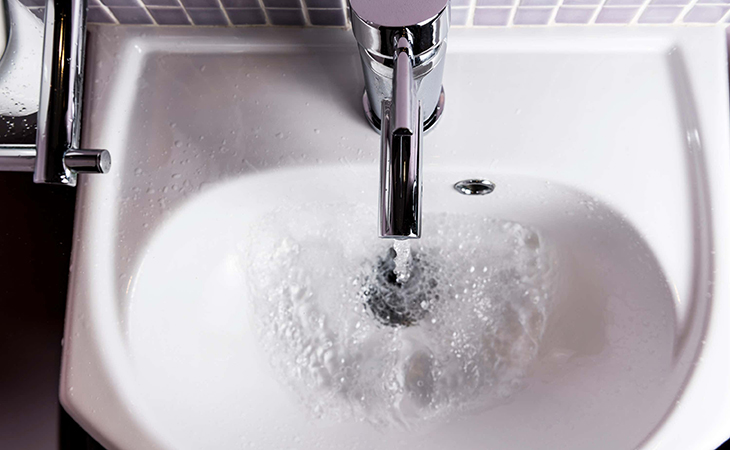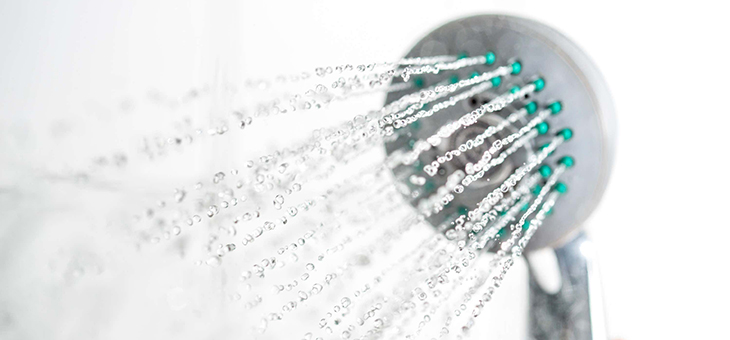Australia’s unforgiving climate means we all need to be conscious of how much water we use. No need to break a sweat trying to save water though – here are some easy conservation tips you can use.
In the bathroom
Showers make up almost 25 per cent of total household water use, so are a great place to save water in the bathroom.
Have a shorter shower – cutting your shower time by just two minutes can result in a water-saving of up to 30 per cent. Try using a shower timer to keep your showers to four minutes.
Install low-flow showerheads – if short showers are too hard, a low-flow showerhead may be a better option. With a standard showerhead using 15 to 25 litres of water per minute, switching to an energy-efficient, three-star-rated showerhead can cut your hot water usage by around 40 per cent
Skip the bath – drawing a bath uses, on average, 80 litres of water, while a four-minute shower uses around 48 litres. If you must have a bath, don’t fill the tub all the way to the top – each extra inch (2.5cm) equates to about five litres of water.
Read more: Rising water bills blowing budgets
Don’t waste the cold water as you wait for it to heat – collect it in a bucket and use it to water your pot plants and garden. You could be catching as much as 10L for every minute you are waiting for the water to heat up.
Toilet
Toilets contribute to about 20 per cent of indoor water use.
Upgrade your toilet – upgrading to a dual flush system can save up to 80 litres of water per day.
When replacing your toilet look for WELS 4-star models that use three litres for a half flush and four litres for a full flush. Be sure to replace both the pan and the cistern.
Place a cistern-displacement device (CDD) in your toilet tank – this will reduce the amount of water used per flush. A CDD works by reducing the amount of water used to flush your loo by taking up space in the cistern, and can save around three litres with each flush. Many water companies provide these for free or you can buy them cheaply online.
Check your toilet for leaks – put some food colouring in the tank and if, without flushing, the colour begins to appear in the bowl within half an hour, you have a leak that needs repairing immediately.
In the kitchen
Don’t pre-rinse your dishes – if you’re lucky enough to have a dishwasher, there’s no need to rinse plates and utensils before putting them in. All you need to do is scrape off any excess food then stack as usual – they’ll be just as clean when you unload.
Read more: Kitchen cleaning mistakes
Fill your dishwasher – running a half load doubles your water use. Waiting until it’s full and using the eco option are the best ways to maximise its water efficiency.
Turn off taps – it may sound obvious, but many of us are guilty of letting water that could be better used elsewhere, run down the drain.
If you’re always waiting for the water to run cold before filling a glass, why not fill a jug and keep it in the fridge so it’s always chilled and ready to drink? Or, in the bathroom, fill a small bowl (not the whole sink) when shaving so you don’t have to leave the water running.

Fix leaks – significantly reduce your water usage by repairing those pesky leaks in your bathroom and kitchen. A hot tap leaking at the rate of one drip per second wastes 6288 litres of water every year, so fix those leaks and start saving today.
In the garden
Water plants carefully – to prevent water from evaporating during the day, only water outdoor plants in the morning or at night, and make sure to aim the water at the soil so it reaches the roots instead of being lost on leaves.
Read more: How often should you water outdoor plants as the weather get cooler?
Look after your lawn – apply a soil wetting agent at least three times a year, particularly at the beginning of spring, beginning of summer and again in mid to late summer. Aerate your lawn annually during the spring months. Aerating compacted lawns allows the soil to better absorb the smaller amount of water it requires to remain healthy.
Get a water butt – make the most of the rain we do get with a water butt, which collects rainwater so you can use it to feed your garden. Depending on how much outdoor space you have, you could collect up to 350L of rain. And it doesn’t have to be an eyesore – these days you can get some very aesthetically pleasing water butts.
How do you save water around the house? Do you have any other tips you can share with our members in the comments section below?
If you enjoy our content, don’t keep it to yourself. Share our free eNews with your friends and encourage them to sign up.

